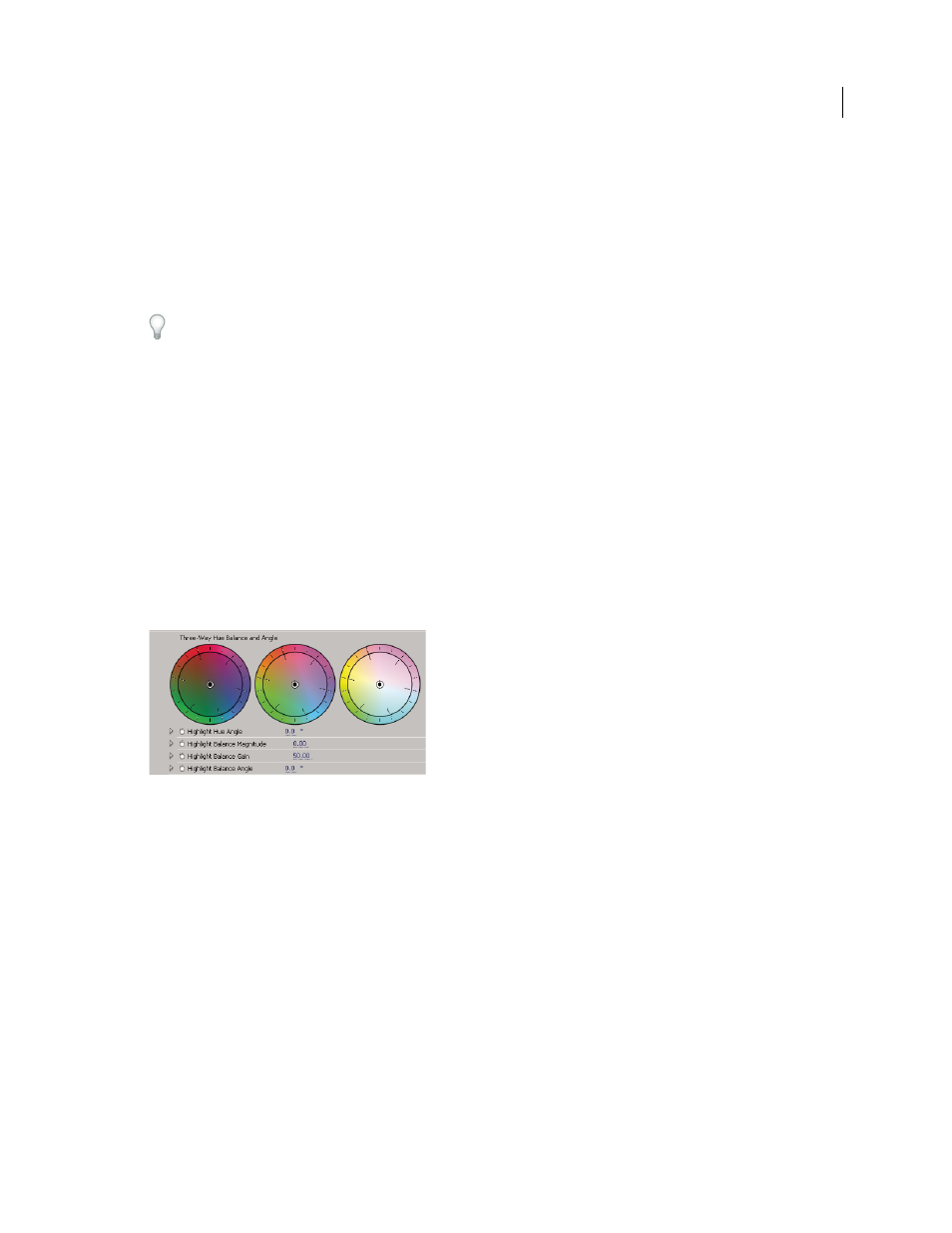Adobe Premiere Pro CS4 User Manual
Page 365

359
USING ADOBE PREMIERE PRO CS4
Effects and transitions
Last updated 11/6/2011
Layout
Determines whether the Split View images are side by side (Horizontal) or above and below (Vertical).
Split View Percent
Adjusts the size of the corrected view. The default is 50%.
Black Balance, Gray Balance, White Balance
Assigns a black, midtone gray, or white balance to a clip. Use the different
Eyedropper tools to sample a target color in the image, or choosing a color from the Adobe Color Picker.
Tonal Range Definition
Defines the tonal range of the shadows, midtones, and highlights in a clip. Drag the square
sliders to adjust the threshold values. Drag the triangle sliders to adjust the amount of softness (feathering).
Choose Tonal Range from the Output menu to view the highlights, midtones, and shadows as you adjust the Tonal
Range Definition controls.
Shadow Threshold, Shadow Softness, Highlight Threshold, Highlight Softness
Determine the threshold and softness
of the shadows, midtones, and highlights in a clip. Enter values or click the triangle next to the option name and drag
the slider.
Tonal Range
Chooses the tonal range adjusted by the Hue Angle, Balance Magnitude, Balance Gain, Balance Angle,
Saturation, and Levels controls. Highlights is the default. Other options in the menu are Master, Shadows, and
Midtones.
Note: You can still adjust all three tonal ranges using the three color wheels even after you choose from the Tonal Range menu.
Three-Way Hue Balance and Angle
Controls hue and saturation adjustments using three color wheels for the shadows
(left wheel), midtones (middle wheel), and highlights (right wheel). A single master wheel appears when Master is
chosen from the Tonal Range menu. A circular thumb moves about the center of the wheel and controls the hue (UV)
translation. A perpendicular handle on the thumb controls the balance magnitude, which affects the relative
coarseness or fineness of the control. The outer ring of the wheel controls hue rotation.
Three-Way Hue Balance And Angle color wheels
Highlights/Midtones/Shadows Hue Angle
Controls the hue rotation in the highlights, midtones, or shadows. The
default value is 0. Negative values rotate the color wheel to the left and positive values rotate the color wheel to the right.
Highlights/Midtones/Shadows Balance Magnitude
Controls the amount of color balance correction as determined by
the Balance Angle. The adjustment can be applied to highlights, midtones, and shadows.
Highlight/Midtones/Shadows Balance Gain
Adjusts brightness values by multiplication so that lighter pixels are
affected more than darker pixels. The adjustment can be applied to highlights, midtones, and shadows.
Highlights/Midtones/Shadows Balance Angle
Controls the hue translation in the highlights, midtones, or shadows.
Highlights/Midtones/Shadows Saturation
Adjusts the color saturation in the highlights, midtones, or shadows. The
default value is 100, which doesn’t affect the colors. Values less than 100 decrease saturation, with 0 completely
removing any color. Values greater than 100 produce more saturated colors.
Auto Black Level
Raises the black levels in a clip so the darkest levels are above 7.5 IRE. A portion of the shadows is
clipped and the intermediate pixel values are redistributed proportionately. As a result, using Auto Black Level lightens
the shadows in an image.